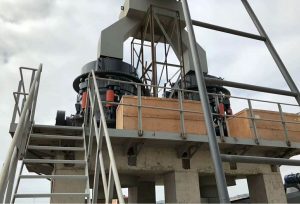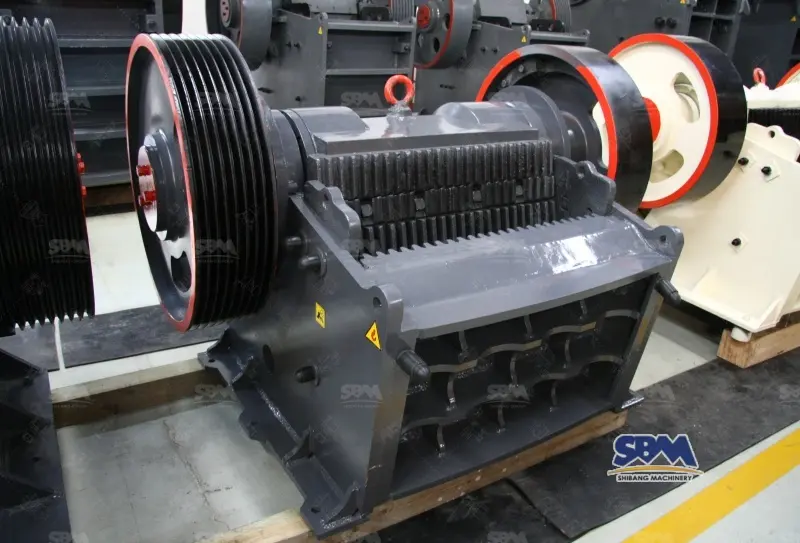Электронная почта: [email protected]
Железная руда
Основное содержание
Представьте себе, что нет стали. Нет высоких зданий, Нет мостов, Нет грузовых кораблей, Нет рабочих фабрик - современный мир останавливается. Все начинается под землей с простой скалой: Железный. Это не так “Просто минерал”; Это сердце индустрии. Работа непосредственно с машинами, которые выпускают его значение. От видимости его особенного Железная руда цвет в грубых полях, услышать, как дробилка разбивает большие камни на более мелкие кусочки - это тяжело, подробный процесс. Исследуете ли вы Как найти железную руду, Работая в Железная руда, или удивляется Для какой железной руды используется, Это руководство ясно объясняет. Мы рассмотрим 4 Типы железной руды, показывать Лучшее место для железной руды во всем мире, и объясните, почему правильная технология сокрушительного. Давайте копаем!
Что такое железная руда? Разбивая рок -миф
Хорошо, Основное определение: Железный Рок или грязь с достаточным количеством железных минералов, чтобы сделать его достойным. Но в действительности? Все сложно. Его никогда чистый железо. У вас есть ценные минералы, такие как гематит или магнетит Смешано с бесполезным отходом -камнем - кварц, глина, и более. Ключ? Содержание железа. В то время как железо существует повсюду в земле, Мы только называем это “руда” Когда он сконцентрирован (обычно 20% к тому, чтобы 70% железо) Чтобы приложить огромные усилия, чтобы выкопать его окупиться. Присутствующие минералы - это ваше руководство - они решают Железная руда цвет Понимаете, Если магнит привлекает его, и самое главное, как Вы превращаете это во что -то полезное.
Этот первый трудный шаг? Дробление. Хард -рок, подобный этому, нужны мощные машины. Я видел, как более слабые дробилки терпят неудачу под постоянным износом из железных скал с тяжелыми кварцами. Вот почему сильные дизайны, как речные камеры дробилки от SBM Китай - Сделано, чтобы справиться с жесткими, Абразивный материал легко - являются важными партнерами на многих шахтах. И Для чего используется железная руда? Почти все это идет, чтобы сделать сталь - платформу для всего, что мы строим и используем. Взрывные печи нуждаются в этом. Вот что держит всю эту массовую отрасль.
Радуга под нашими ногами: Железная руда цвет - ваш полевой гид
Забудьте о модных лабораториях для первого взгляда. TheЖелезная руда цвет Первая подсказка вашего разведчика, кричать личность минерала. Это не просто красиво; Это практичная Intel на качество и сколько работы находится впереди:
- Глубокий красный до ржавой коричневой: Вы, вероятно, нашли Гематит (Fe₂o₃). Это рабочая лошадка, наиболее распространенный и экономически решающий Железный во всем мире. Этот ржавый красный Железная руда цвет? Винить окисленное железо - собственная работа ржавчины природы. Думать о огромном, Марсиан-красные пейзажи австралийской пилбары-чисто гематитовая страна. Будьте готовы к, Плотный рок.
- Jet Black до темно -серого: Передай привет Магнетит (Fe₃o₄). Его партийный трюк? Сильный магнетизм. Это плотно, черный Железная руда цвет это мертвая раздача. Он часто наносит более высокий железный удар, чем гематит в теории, Но освобождение от его рок-тюрьмы может быть энергоемким. Найти это похоже на поразительное золото (хорошо, Железный золото) геологу разведки.
- Желтовато-коричневый и тусклый коричневый: Вероятно, глядя на лимонит или “болотная железная руда” (Фей(ОЙ)Nh₂o). Этот Железная руда цвет кричит “выветривание!” - он увлажняется и обычно встречается в отдыхе вблизи поверхности. Содержание железа? Скромный. Исторически важно (Подумайте о колониальной Америке), Но сегодня меньше глобального игрока.
- Стаие серый до темно-красновато-коричневого цвета: Может быть Сидерит (Feco₃). Его Железная руда цвет менее яркий, Часто немного неописуемый. Это карбонат железа, это означает более низкое содержание железа и обязательный шаг обжарки (кальцинирование) Перед выплатой - дополнительная стоимость, Дополнительные хлопоты. Не предпочтительный гость на вечеринке плавов.
Стол 1: Железная руда типы – Цвет, Грит, Реальность
| Руда тип | Похоже… (Железная руда цвет) | Ав. Fe Punch | Ключевые черты личности | Где вы это найдете | Обработка измельчения |
|---|---|---|---|---|---|
| Гематит | Глубокий красный, Ржавый воин | 50-70% | Жесткий, Плотный, Игнорирует магниты | Гигантские бифс, Осадочные слои | Раздавить жестко, молоть, отдельный (Гравитация/флотация является ключевым) |
| Магнетит | Jet Black Magnetic Marvel | 60-72% | Прилипает к магнитам!, Очень плотный | Бифс, Магматические вторжения | Раздавить жестко, измельчить нормально, Магнитное разделение сияет |
| лимонит | Желто-коричневый выдержанный | 35-50% | Мягкий, Увлажненный, Рядом с поверхностью | Госсаны, Старые поверхностные отложения | Высохнуть, Жарить (Кальцине), затем кольцо |
| Сидерит | Серый/коричневый карбонат | 30-40% | Шиповы в кислоте, Нижний класс | Осадочные кровати, Вены | Должен сначала поджарить (отгонять от Co₂), затем распахся |
Изучать этоЖелезная руда цвет подписи являются фундаментальными полевыми работами. Обнаруживая эту рассказ о красном или ощущаем притяжение черного песка с помощью карманного магнита? Это острые ощущения знанияКак найти железную руду.
Поразительная зарплата: Как найти железную руду - пьесы исследователя
Хочу знатьКак найти железную руду? Это не панорамирование для золота. Это смесь геологии старой школы старой школы, передовые технологии, и инстинкт инстинкта, оттачиваемый грязными сапогами. Вот полевое руководство:
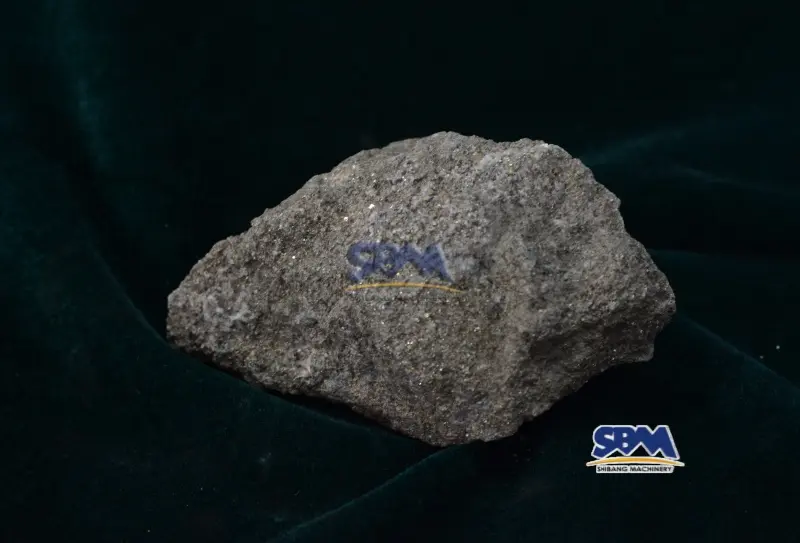
1. Геология Евангелие
Начните с карты, всегда. Железная руда любит конкретные районы:
- Полосатые железные образования (Бифс): Древний (Мы говорим миллиарды лет), Слоистые камни, держащие родину высокого уровня гематит и магнетит. Нацеливаться на древние ядра континентов - думайте канадский щит, Австраливая Пилбара Кратон, Бразильские кратоны. Обнаружение отличительной полосы и Железная руда цвет это первый шаг.
- Магматические укрытия: Магнетит кристаллизуется прямо от охлаждающей магмы. Ищите большой, глубоко укоренившиеся навязчивые тела-такие, которые образуют горные корни.
- Осадочные бассейны: Дом к оолитовой гематит (Крошечные круглые зерна) и сидерит слои. Найдите правильный древний морской бассейн.
- Ржавые подсказки (Суперген): Выветривание возле поверхности может сконцентрировать железо. Он превращает BIF нижнего класса в богатые гематит “кепп” или формы лимон Госсаны - эти ржавые, Железные обнажения. Видя это ярким Железная руда цвет окрашивая склоном холма? Это неоновый знак природы, кричащий “Посмотри здесь!” - Классика разведчика Как найти железную руду мгновенный.
2. Глаза в небе & Технология на местах
- Спутник & Беспилотники: Увеличить. Карта крупномасштабных типов камней, структуры, и тонкие сдвиги в растительности или Железная руда цвет Этот намек на похороненное сокровище.
- Магнитные опросы: Перейти для магнетит. Пролететь магнитометром на землю или пройти по земле. Это сильное магнитное тяга? Как маяк для черной руды. Делает магнетитовые отложения относительно “Полегче” найти.
- Гравитационные исследования: Почувствуйте. Массивный гематит или магнетит Тела плотные. Гравитационные счетчики обнаруживают этот дополнительный вес, точно определяя цели.
3. Следуйте по геохимическому следу
Собирать почву, каменные чипсы, потоковые отложения. Лабораторный анализ охоты на повышенные уровни железа и связанные с ними элементы. Это детективная работа, Поиск аномалий, которые шепче, “Ты здесь глубже.”
4. Получите грязь: Настоящая полевая работа
Технология помогает, но ничто не сравнится с тем, чтобы быть на земле. Геологи проходят через землю, Тщательно изучить рок -образования, Свободные камни, и почва. Они несут молотки, увеличительные очки, и самое главное, карманный магнит. Замечая Железная руда цвет, тестирование веса скалы, Видя полосатые узоры, ощущение притяжения магнетит с магнитом, или обнаружение ржавых пятен поверхности - это настоящий навык поиска руды. Обнаружение свободных камней с правильным цветом и весом может привести прямо к основному рудному залову.
5. Бурение: Момент истины
Все картирование, воздушные опросы, и полевые работы привели к этому последнему шагу. Diamond Core Drilling или RC Drilling Diging в землю. Это стоит много, Но это только верный способ ответить на критические вопросы: Железная руда действительно присутствует? Насколько это глубоко? Насколько хорошо качество (оценка)? Что Типы железной руды существуют там? Пробуренные образцы не лгут - они показывают, нашли ли вы стоящее рудное тело или просто научно интересные камни.
От рока до готового: Железная руда добыча - движущаяся горы
Нашел жизнеспособный депозит? Теперь начинается настоящая мышечная работа: Железная руда. Экстракция - это колоссальный инженерный подвиг, продиктован личностью депозита - размером, форма, глубина, оценка, И окружающая скала.
1. Добыча (Король масштаба)
Доминирует в сцене для обширного, близкие месторождения, Особенно те гиганты BIF.
- Концерт: Представьте себе, что вы лежите гору в террасовую яму. Массивные лопаты (Некоторые сочинения 100+ тонны за укус) и перевозить грузовики размером с дома с (отходы). Открытая руда просверлена, взорвался в управляемые куски, и вытащил. Масштаб ошеломляет-шахты Пилбары перемещают больше земли ежедневно, чем некоторые маленькие страны.
- Почему это правит: Большое объем, Более низкая стоимость за тонну (по сравнению с подземным), относительно безопаснее. Идеально подходит для больших, мелкий, табличные отложения. Ты видеть тот Железная руда цвет слои, выставленные в стенах ямы.
2. Подземная добыча (Когда руда уходит глубоко)
Используется, когда приз похоронен слишком далеко, круто погружение, или поверхностная добыча не ограничена (под городом, Защищенная территория).
- Как это делается: Это сложный и капитальный. Общие методы:
- Блок печь: Подкрасить массивный рудный блок и позволить гравитации сделать тяжелую работу, когда он рушится. Руда взята из туннелей ниже. Используется для глубокого, массивные руды.
- Подоборный пещерный: Подобная идея, но разбивая руду на меньшую, Управляемые блоки на определенных уровнях.
- Комната и столп: Вырезать “номера” руды, оставив крепкий “столбы” держать крышу. Общепринятые для хранения отложений ближе к поверхности.
- Реальность: Дорогой. Требуются тонущие валы, Вождение километров туннелей, сложная вентиляция, и строгие протоколы безопасности. Там другой мир.
3. Обеспечение: Где магия (и машины) Случается
Свежего добываемой руды (Зарядка или ПЗУ) обычно нет Взрывная печь готова. Это смешанный пакет с ценным железом и бесполезным, часто в более низких оценках, чем необходимо. Оборочение - это путь обновления:
- Дробление & Скрининг: Привратники: Ром руда большая и коренастая. Вот где хэви -метал встречает дорогу. Первичные дробилки (Подумайте о гигантских челюстных дробилках или бурных гираториях) доставить первое, мощный укус. Вторичные и третичные дробилки (часто конусные дробилки или рулоны с высоким давлением) снять его дальше. Экраны сортируют обломки по размеру. Этот этап жестокий. Чистая твердость и абразивность Железный, Особенно кварц в Bifs, пожирает плохо построенное оборудование. Вам нужны дробилки, предназначенные для наказания-вид сверхпрочного, высокая пропускная способность речные камеры дробилки и ударные дробилки спроектирован SBM China. Они построены, чтобы справиться с постоянным нападением жесткого, абразивный рок, Минимизация дорогостоящего времени простоя. Получение раздавливающего направления устанавливает все, что следует за.
- Шлифование: Снимает раздавленную руду до песка или более тонкого, освобождение железных минералов из цепляющейся. Энергия, жаждаясь, но необходимо.
- Разделение – Сортировка пшеницы из кофы:
- Магнитное разделение: Суперзвезда для магнетит. Мощные магниты (типы барабанов или рулонов) без особых усилий дергал магнитный минерал от немагнитных отходов. Элегантный и эффективный.
- Гравитационное разделение: Использует различия плотности. Спирали, прижие, или встряхивающие столы позволяют более тяжелым железным минералам утонуть от более легкой ганги. Рабочая лошадка для гематит.
- Флотация: Добавляет химию. Химические вещества заставляют специфические минералы отталкивать воду (гидрофоб) поэтому они придерживаются пузырьков воздуха и уплывают. Используется для более сложных руд или более тонких частиц.
- Выплата: Высококачественная железная руда концентрат (60-68% Fe для гематита, часто 65-72% для магнетита) Готовы к печи. Оставшиеся отходы? Хвосты, Хранится в безопасном порядке в инженерных плотинах. Это процесс снижения массы - превращение горов камня в концентрированную ценность.
Большая четверка: Познакомьтесь с тяжеловесами железной руды
Существует множество железных минералов, но только четыреТипы железной руды доминировать на коммерческой стадии. Зная это4 Типы железной руды является ключом к пониманию рынка и обработке:
1. Гематит (Fe₂o₃): Действующий чемпион
- Ставки: Бесспорный король глобального Железный объем. Найдено в эпических BIF и обогащенных месторождениях.
- Личность: Глубокий красный Железная руда цвет (порошок это, Это как ржавчина), немагнитный, жесткий, как гвозди. Обычно 50-70% Фей. Pilbara Red - это его подпись.
- Горнодобывающая реальность: Почти исключительно массовые операции с открытой картой. Австралия, Бразилия, Индия, Южная Африка - это электростанции.
- Обработка измельчения: Требует сокрушительного, скрининг, шлифовка, и разделение (Гравитация - король, Флотация помогает). Игнорирует магниты. Эта твердость? Это означает, что дробилки и мельницы берут. Эффективный, износостойкий сокрушительный заранее (как тяжелые дизайны SBM) имеет решающее значение для снижения затрат и пропускной способности. Ты чувствовать потребляемая энергия, измельчающая этот материал.
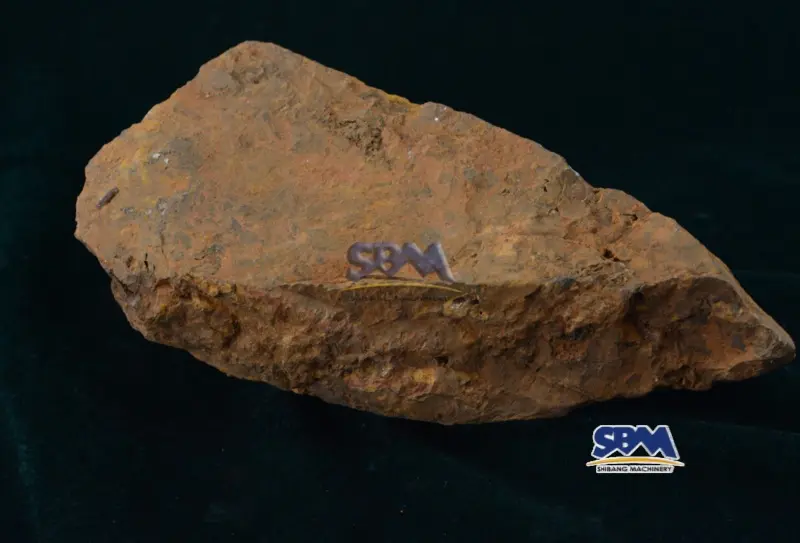
2. Магнетит (Fe₃o₄): Магнитная электростанция
- Ставки: Ценится за его высокий потенциал содержание железа и магнитная личность. Найдено в Bifs и магматических месторождениях.
- Личность: Черный/темно -серый Железная руда цвет, невероятно плотный, и яростно придерживается магнитов. Теоретическое содержание Fe - это вершины (72.4%), Фактический концентрат превосходен (often >68% Fe).
- Горнодобывающая реальность: Открытая или подземная, в зависимости от глубины. Австралия, Швеция, Россия, США, Канада имеет значительные игры.
- Обработка измельчения: Большим преимуществом магнетита является магнитное разделение - оно очень хорошо работает, чтобы вытащить чистый магнетит от отходов после дробления и измельчения. Но частицы магнетита обычно очень маленькие и плотно застрявшие, Нужна тяжелая шлифовка, чтобы освободить их. Это вызывает огромное использование энергии во время шлифования, что является основной стоимостью. Стадия сокрушительного по -прежнему требует обработки чрезвычайно жесткого рока. Сильные первичные дробилки, которые могут плавно обрабатывать большие количества (Как специализированное оборудование SBM) важны для кормления этих мельницы экономически эффективно. Это баланс: Вы получаете высококачественный концентрат, Но это требует высокой энергии.
3. лимонит (Увлажненный): Выветрившегося родственника
- Ставки: Сформировано в результате поверхностного выветривания, Исторически важно (“болотный железо”), Но сегодня милая лига во всем мире.
- Личность: Желтовато-коричневый Железная руда цвет, более мягкий, Землистое чувство. Содержание железа ниже (35-50% Фей) и включает воду, запертую в своей структуре.
- Горнодобывающая реальность: Обычно мелкий, Бликоповерхностные открытые ямы. Больше исторической сноски в Европе/США, чем крупный нынешний игрок.
- Обработка измельчения: Нуждается в сушке и интенсивном нагревании (кальцинирование) Чтобы уехать из воды до плавка. Добавляет значительную стоимость и сложность. Часто используется локально, если таковые имеются, редко стоит на расстоянии.
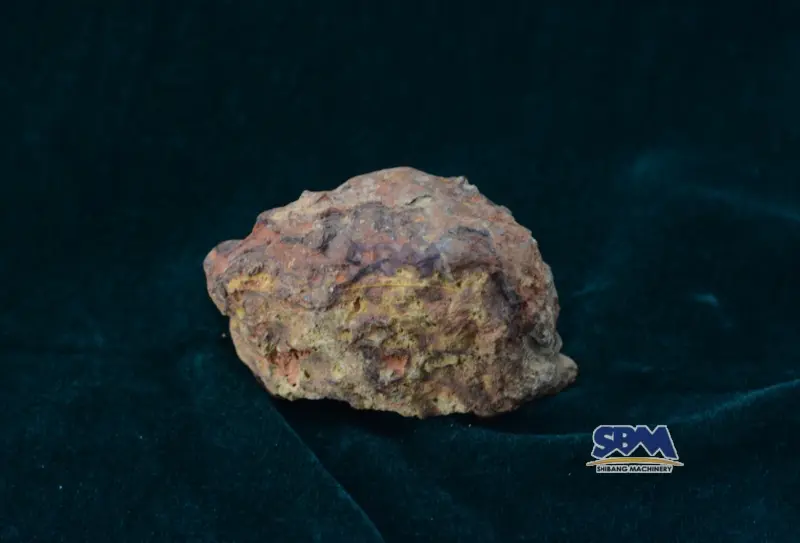
4. Сидерит (Feco₃): Карбонат вызов
- Ставки: Железный карбонат. Исторически добывается в таких местах, как Великобритания, Но экономически сложно сейчас.
- Личность: Железная руда цвет варьируется (серый, коричневый, желтый), часто с жемчужным блеском. Самое низкое содержание Fe в главной команде (30-40%). Физзы в кислоте - быстрый полевой тест.
- Горнодобывающая реальность: Добываемые из осадочных слоев или вен. Нишевый игрок.
- Обработка измельчения: Должен быть жарен (кальцинирован) Чтобы отключить Co₂ и преобразовать его в оксид железа до плавка. Еще один дорогой, Энергетический предварительный шаг. Часто смешивается с руками более высокого класса, если они вообще используются. Не любимый ребенок операторов плавов.
Стол 2: Железная руда тяжеловеса – Проверка реальности
| Особенность | Гематит (Король) | Магнетит (Магнитное чудо) | лимонит (Выветрившийся) | Сидерит (Карбонат) |
|---|---|---|---|---|
| Похоже | Глубокий красный, Ржавый | Jet Black | Желто-коричневый | Серый/коричневый |
| Fe Content | Твердый (50-70%) | Высший потенциал (60-72%) | Скромный (35-50%) | Самый низкий (30-40%) |
| Магнетизм | Игнорирует магниты | Любит магниты! | Слабое притяжение | Игнорирует магниты |
| Ключ обработки | Раздавить жестко, Молоть, Гравитация/плавание | Раздавить жестко, Измельчить нормально, Mag Sep | Сухой, Жарить (Кальцинировать) | Жарить (Кальцинировать), Кольцо |
| Рыночная роль | #1 (Лидер тома) | #2 (Премиум концентрат) | Несовершеннолетний игрок | Несовершеннолетний игрок |
| Большая головная боль | Тяжелый рок, Измельчить энергию | Массовая затраты на энергию измельчения | Низкий уровень, Вес воды | Низкий уровень, Co₂ бремя |
Питание мира: Для чего на самом деле используется железная руда?
ПониманиеДля какой железной руды используется сводится к одному слову: Сталь. Серьезно, над 98% всего этого добыта. Давайте разберем это:
1. Сталь: Бегемот
- Взрывная печь (Бр) – Стандартный метод: Обработан Железный (как спекание, гранулы, или комковая руда), кока -кола (Запеченный уголь), и известняк Войдите в горячую камеру для взрыва. Внутри, Экстремальная тепло растает все материалы. Кока -кола превращает оксиды железа в жидкий металлический железо, в то время как известняк удаляет примеси, создавая шлак. Это производит расплавленное “Свинья железа” - высокий углерод. Железо свиньи перемещается в основную кислородную печь (Боф), где кислород прорывается через него, чтобы удалить дополнительный углерод, Создание стали. Это остается доминирующим процессом создания стали по всему миру.
- Прямое уменьшенное железо (Дри) – Газовый маршрут: В этом процессе используется природный газ (или уголь) удалить кислород из Железный гранулы или кузную руду без таяния. Результат твердый “губчатая железа” (называется DRI или HBI). Этот более чистый железный материал в основном расплавлен в электрических дуговых печи (Eafs), Обычно смешанный с большим количеством переработанной стали.. Это более адаптируемый подход, который может быть зеленой (Особенно с использованием чистого водорода) и становится все более важным.
- Вездесущий сталь – Это везде: Посмотрите вокруг. Сталь из железной руды образует основу современной жизни:
- Здания: Небоскребы, мосты, стальные батончики в бетоне
- Транспорт: Машины, Корабли, поезда, рельс
- Машины: Экскаваторы, турбины, Заводское оборудование
- Энергия: Трубопроводы, силовые башни, ветряные турбины
- Дом: Холодильники, стиральные машины, продовольственные банки
Это совершенно важно.
2. Железное литье: Прямой маршрут
Меньший кусочек бластого печи Железное изливается прямо в плесени. Этот “чугун” жестко и износостойкий (но хрупкий). Подумайте о блоках двигателя, Крышки люка, трубы, И да, Эти винтажные сковороды.
3. Другие нишевые игроки
- Пигменты: Некоторые оксиды железа (Охры, Умберс), Иногда от побочных продуктов обработки руды или конкретных месторождений, цветные краски, покрытия, и даже косметика.
- Тяжелые СМИ: Мелкоземно магнетит (или Ferrosilicon) плотный. Он используется как “тяжелая среда” В плотных растениях (как мыть угля) плавать световым вещам и погрузить тяжелые вещи на основе плотности.
- Радиационное экранирование: Плотность железа делает его полезным в бетоне для защиты от радиации (например, вокруг ядерных учреждений или медицинских рентгеновских комнат).
- Катализаторы: Железные соединения играют роль в ключевых химических процессах, Как и Haber Process, создавая аммиак для удобрений.
Глобальные железные гиганты: Где реальное действие руды
Говоря оЛучшее место для железной руды? Зависит, если вы имеете в виду чистый объем, Высокое качество, или самый простой доступ. Вот глобальный ландшафт с ямы:
1. Австралия: Непревзойденный экспортный джаггернаут
- Товары: Огромные резервы, Доминирует высокий уровень гематит в культовой пилбаре (Из). Дом для горнодобывающих титанов: Красная река, BHP, Fortescue. Это эталонная руда.
- Производственная мышца: Последовательно мировой #1 экспортер, Часто ведущий производитель. Высокоэффективные мега-мины рядом с побережью = недорогая доставка в Азию. Пилбара Операции - это инженерные чудеса.
- Почему это лучшая собака: Чистый масштаб, Постоянно высокий уровень, Инфраструктура горнодобывающей промышленности мирового класса, Стабильная операционная среда, и отличное расположение, кормившие голодные азиатские сталелитейные заводы (Китай, Япония, Корея). Пилбара руда устанавливает стандарт.
2. Бразилия: Дом самых чистых гигантов
- Товары: Обладает некоторыми из крупнейших и крупнейших планеты и Высший класс депозиты, Особенно легендарный гематит горы Карахас (К) - Jewel's Vale's Crown. Исключительно чистая руда (часто +65% Фей).
- Производственная мышца: Тяжелый мировой производитель и #2 экспортер. Качественные команды премиум -цены.
- Улов & Сила: Существуют логистические препятствия - перевозя руду сотни км от моих в атлантические порты. Но беспрецедентное качество и масштаб караджа делают его незаменимым. Когда рынок хочет премиального комочка или корма для гранулы, Бразилия часто отвечает.
3. Вспомогательный актерский состав – Крупные игроки
- Китай: Слон в комнате. Мир #1 сталелитейщик и Железный потребитель. Также самого огромного продюсера, Но большая домашняя руда - более низкая оценка, сложный, и дорого добывать/процесс. Полагается тяжело на импорт (особенно австралийский и бразильский высокий уровень). Движется глобальными ценами.
- Индия: Массовые резервы, в первую очередь гематит. Значительный производитель и растущий экспортер. Сталкивается с проблемами с последовательности классов руды, Инфраструктура узкие места (железнодорожный/порт), и нормативные сдвиги. Ключевой поставщик, Особенно на близлежащие рынки.
- Россия: Огромные резервы, центрирована на кус -магнитной аномалии (магнетит). Крупный производитель, Но высокое потребление стали домашней стали питается в экспорте. Текущие геополитические реалии серьезно усложняют экспортную логистику и доступ на рынок.
- ЮАР: Значительный высокий уровень гематит резервы, Особенно премиум -руда от северной мыса (Шишен шахта). Ключевой поставщик в Европу и Азии. Сталкивается с постоянными проблемами, эффективно перемещающими руду через рельс в порты.
- Канада: Важный продюсер из лабрадора (гематит & магнетит). Высококачественная руда, Критический поставщик североамериканской и европейской мельницы. Действует в сложном климате, но обеспечивает надежное качество.
Стол 3: Железная руда титаны – Резервы, Производство & Реалии (Иллюстративный)
| Страна | Сердце | Звезда типа руды | Резервы (Гт) | Производство (Мт/год) | Ключевая сила / Проверка реальности |
|---|---|---|---|---|---|
| Австралия | Пилбара (Из) | Гематит | 50+ | 900+ | Шкала, Высокий класс, Экспортная машина |
| Бразилия | Карахас (К) | Гематит | 30+ | 400+ | Непревзойденное высокое качество |
| Китай | Несколько | Гематит/Маг | 20+ | 800+ (Потребляет >!) | Массивный рынок, Сложная домашняя руда |
| Индия | Одиша, Джаркханд… | Гематит | 7+ | 250+ | Большие резервы, Растущий экспортер, Логистические препятствия |
| Россия | Курск, Сибирь | Магнетит | 25+ | 100+ | Большие резервы, Внутренняя направленность, Геополитические ограничения |
| ЮАР | Северный Кейп | Гематит | 1+ (Привет) | 70+ | Премиальная кусок руда, Железнодорожные проблемы |
| Канада | Лабрадор впадится | Гематит/Маг | 6+ | 50+ | Надежное качество, Н.А.. & ЕС поставка, Резкий климат |
Гриттистая цепь – От руды до возможности
Стоя у нашей главной челюстной дробилки, сломав пилбару гематит - громкий шум, Сильный встряхивание, Сырая сила - дает реальное чувство масштаба. Этот глубокий красный рок, известный своим специальным Железная руда цвет, из лучших источников, таких как австралийская пилбара или бразильская карахас. Он имеет настоящее обещание. Поиск руды - первый шаг. Горнодобывающая промышленность перемещает огромное количество земли. Дробление - где большие камни попадают в сталь - нуждается в жестких, надежный механизм. Это важно. Смотрю наш SBM Китай дробилки работают без перерыва в жестких шахтах, Принимая одежду, которая бы сломала другие машины, показывает их ценность. Они делают производство. Зная 4 Типы руды - гематит (основной), магнетит (магнитный), лимон (выветрился), сидерит (карбонат) - практично. Решает технологические потребности, Использование энергии, расходы, и Что строит железная руда: База нашего мира.
Железная руда имеет дело с постоянными проблемами: Использование лучших руд, давление для сокращения повреждения окружающей среды (особенно углерод), и изменение рынков, связанных с глобальными потребностями стали. Но основные силы - во всем мире рост, растущие города, Требования инфраструктуры - оставайтесь сильными. Будущее нуждается в новых решениях: Лучшие инструменты исследования, более эффективная добыча и обработка (в том числе дробление), и большие достижения в области низкоуглеродного стали (как водород). Непрерывные улучшения жестких, Эффективное оборудование - начиная с ключевых основных дробик - имеет важное значение. Это быстро меняющееся поле зависит от скала, которая поддерживает современную жизнь. Этот путь от вида железной руды цвета под землей до стали в зданиях или автомобилях? Он показывает человеческое умение с материалами Земли. Охота на новые депозиты и лучшие способы продолжаются - тяжелая, но важная работа, которую мы вернули, Тон от тонны.


